Herniated and Bulging Discs are some of the most common causes of pain and discomfort in the back that Chiropractors see in their patients.
Backbone discs are sensitive because they are like spongy pads found between the particular bone fragments, the vertebrae, of the spinal column.
Generally known as intervertebral discs, each is a set, circular capsule about one inch in diameter and one-quarter inches thick.
Each intervertebral disc has a biscuit-shaped framework with a jelly-like middle known as the Nucleus Pulposus and an extremely strong external membrane known as the Annulus Fibrous.
As children, the spinal discs are fluid-filled sacs that start to solidify as part of the regular aging. By beginning adulthood, the blood supply stops and the soft inner material hardens.
By middle age, your discs are hard, almost like a piece of hard rubber. This is why adults are vulnerable to disc damage and Disc Degeneration.
Discs are in-between the spinal vertebrae and kept in position by structures linking the spinal bone fragments and muscles. There is little room for discs to "slip." A "bulging" or herniated disc however, can happen when the fluid drives out through a break in the surface.
This can irritate nearby nerves and result in discomfort, numb feeling or weak point in an arm or leg. Many individuals, however, encounter no symptoms from a herniated disc.
The backbone is not a rigid framework – it is able to fold and twist because there are flexible, shock-absorbing cushions or discs between each of the spinal vertebrae.
Each intervertebral disc is a set, biscuit-shaped framework with a jelly-like middle known as the nucleus and an extremely strong external skin known as the annulus.
Article Table of Contents:
- Slipped and Herniated Discs
- An Overview of Herniated Discs
- Signs and Symptoms You May Have a Herniated Disc
- Causes of Herniated Disc
- How are disc issues treated?
- Can disc issues be prevented?
- Chiropractic for Bulging Disc
- Chiropractic methods used for herniated discs
Slipped and Herniated Discs
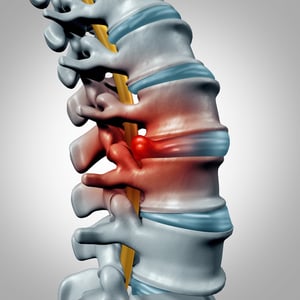 Imagine if you jump up and down. What would happen to the stack of bony spinal vertebrae that make up the backbone without the cushioning and support of these discs?
Imagine if you jump up and down. What would happen to the stack of bony spinal vertebrae that make up the backbone without the cushioning and support of these discs?
Now, move your back side to side. Again, you can visualize the give and take of the discs between the spinal vertebrae. Without these discs, your backbone couldn’t operate.
Symptoms may vary greatly, based on the position of the herniated disc.
A herniated disc in the neck may cause symptoms in the shoulders, hands or chest.
Herniated discs in the back may cause sciatica, with leg discomfort and other sensors related symptoms. Also, a herniated disc in the lower back may be felt in the buttock and down the back of the leg to the ankle or feet.
What are the most frequent disc problems?
A disc “bulge” outcomes from slight bulging of the outermost materials of an annulus fibrosis. These small bulges can be agonizing for a short time frame.
A disc protrusion/extrusion, also known as “herniation,” is a more important damage. It outcomes from a complete or important tear of the materials of an annulus-when some of the nuclei leaks through. A herniation can also be agonizing and may even cause sensors compression. In the most severe situations, the backbone can become compressed.
The most popular disc issue suffered by grownups is degenerative disc illness. Such things happen when the disc nucleus loses water and tear develop in it.
One's whole body then types osteophytes (bone spurs), along with the edges of the vertebra and the disc space narrows. The most recent evidence shows that, most often, there is a hereditary link to the development of degenerative disc illness. Degenerative disc illness can also be caused by trauma/injury.
An Overview of Herniated Disc
Herniated disc or bulging disc is an illness wherein a disc protrudes outside of the regular radius in the backbone. An individual suffering from this situation may not even know there is anything wrong until the bulging disc presses on a nerve in the spine and start causing excruciating discomfort.
Based upon on the location on the backbone, a herniated disc can cause discomfort and loss of mobility. Chiropractors understand just how agonizing and difficult it can be to suffer from this debilitating backbone situation. Chiropractic treatment has many benefits and is one of the most popular alternative therapies used to cure herniated or bulging disc.
Signs and Symptoms You May Have a Herniated Disc
A herniated disc alone may not cause discomfort. Pain happens when pressure is put on the nerve roots or backbone.
Based upon on the location of the herniated disc, symptoms will happen in the area of your bodies impacted by the nerves. The most popular signs and symptoms of a herniated disc are…
Arm or Leg Pain – If your herniated disc is in the back, you’ll generally feel the most extreme discomfort in your butt, upper leg, and calf. It may also include an aspect of the foot. If your herniated disc is in your neck, the agony sensation will generally be most extreme in the neck and shoulder. This discomfort may shoot through your arm or legs when you
Numbness or Prickling – Those who have a herniated disc often encounter numb feeling or tingling in the aspect of your bodies with the impacted nerve.
Muscle Weakness – Muscles with the impacted nerve tend to weaken. This may cause you to stumble, or impair your ability to lift or hold items.
Often the most obvious signs and symptoms of a herniated disc are not in the neck or back. A herniated disc in the back may cause the most extreme discomfort in your thigh, leg, and buttocks; while a damaged disc in your neck may cause discomfort in your arm and shoulder.
If you are experiencing back or neck discomfort, especially along with discomfort in the feet or hands, this is your body’s way of signaling that something is not right and you are going to seek for medical care.
A herniated disc can be a complicated health matter and must be addressed as soon as possible to avoid complications and chronic discomfort.
Causes of Herniated Disc
Aging is one of the most frequent causes of a bulging or herniated disc. As people age, the shock-absorbing spinal discs lose its water content and elasticity, making them stiffer and vulnerable to damage or injury. Any minor stress increases the stress of the disc’s central core and puts a lot of pressure stressing on the surface.
- Repetitive activity like raising, flexing, standing or driving
- Sports activities
- Improper raising techniques
- Unhealthy habits like smoking and drinking
- Physical stress, such as car accident or fall
How are disc issues treated?
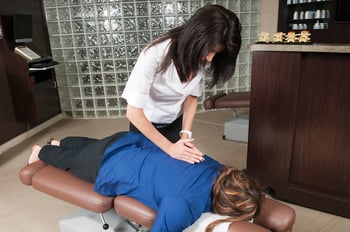 Luckily, in most conditions, disc issues are easily given conservative interventions. At the start of the course of a serious damage, your physician of Chiropractic treatment will likely set a goal of discomfort control, using several different actual modalities to reach it.
Luckily, in most conditions, disc issues are easily given conservative interventions. At the start of the course of a serious damage, your physician of Chiropractic treatment will likely set a goal of discomfort control, using several different actual modalities to reach it.
Both ice and heat have shown effectiveness in managing the agony sensation of serious low-back damage. Your chiropractic doctor will help you figure out which is efficient for you.
In addition, getting you back on your feet and moving as quickly as is safely possible is critical. Typically, the shorter period you spend in bed, the better off you are in terms of long-term outcomes.
You’ll also need to learn not to be afraid to move. If you “baby” the back, generally, the long-term results will be worse. Chiropractic spinal adjustment has also been confirmed to be a secure and efficient tool in the control of disc issues.
Manipulation is especially efficient when combined with treatment working out. In most conditions, backbone surgery treatment and injections are not necessary in the control of disc problems- and they often cause more issues than they’re worth.
Your physician of Chiropractic treatment will talk about all available therapies with you and help you decide on the best course of action.
Can disc issues be prevented?
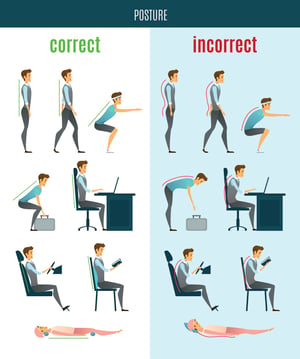 While physical exercise out will help strengthen the back, research has confirmed that staying fit and using appropriate whole body methods alone will not avoid damage.
While physical exercise out will help strengthen the back, research has confirmed that staying fit and using appropriate whole body methods alone will not avoid damage.
It is recommended that individuals do not lift more than 50 lbs. Further, actions that require awkward or prolonged postures and recurring stresses, position individuals at higher risk for musculoskeletal disorders and disc issues regardless of whole body methods and fitness level.
Your Chiropractic Doctor can conduct an ergonomic assessment of your perform and home actions to help you avoid damage.
It is also critical to have “spinal awareness.” Make an effort, for example, to be aware of what position you are maintaining when you sit, stand, lie down, work, or while working out at the gym.
Lift objects with appropriate position, such as flexing your knees, maintaining your item close to your entire whole body, maintaining your back straight and raising with your feet. Never lift a product by flexing over and twisting. You’ll only invite a back damage.
Chiropractors evaluate the entire spine.
Even if you only have lumbar discomfort, your chiropractic doctor will examine your neck, too. He or she wants to see if your backbone is functioning overall.
So you should remember: What happens in one region of your backbone can influence other parts of your backbone and/or whole body.
After reviewing this results coming from your examination, your Chiropractor can figure out if you have an intervertebral disc damage. The kind of disc damage you have will figure out what therapies your chiropractic doctor will use to deal with your symptoms.
Some individuals are not good candidates for some types of Chiropractic treatment. So, if you have cauda equina syndrome - it’s an unglued bowel or bladder with an accompanying intervertebral disc injury - then you will need immediate medical care as this is something that cannot be handled by your chiropractic doctor.
A Nonsurgical Treatment Option
Chiropractic therapy for a herniated disc likely demands flexion diversion. One of the most beneficial types of spinal adjustment for a herniated disc, flexion diversion includes the use of a precision-engineered desk.
While lying on your stomach the desk is set to carefully fold at the waist in a particular rhythmic pattern that is based on your situation. All movements are provided and controlled by your chiropractic doctor — not a computer.
The flexing creates a moving action that can help the disc return to its regular place and therefore begin the recovery procedure.
Your appropriate care plan is designed to correct the issue, not mask the symptoms. Multiple classes, 30 mins or less, are required.
Combined with home workouts and ice therapy, this situation usually can be managed well without the need for surgery treatment or medication.
Chiropractic for Bulging Disc
Chiropractic is a preferred remedies for many patients with bulging disc because it is non-invasive and doesn't include drugs or injections. Once you have your analysis, you and your chiropractic doctor can work together to find the best way to cure your situation.
Your chiropractic doctor will want to verify your analysis so you may go through questions about your health background, an actual evaluation, and tests which entail nerve function, reflexes, and muscular mass.
Your chiropractic doctor may also order MRI or x-ray as well as other diagnostic testing in order to get a better picture of what is going on.
Chiropractic for bulging discs is secure, efficient, and durable. If you are having back pain issues from a bulging disc, you owe it to yourself to search for quality Chiropractic treatment so that you can enjoy less discomfort, improved mobility, and better total wellbeing.
Chiropractic methods used for herniated discs
![]() Flexion-distraction Strategy for Herniated Discs
Flexion-distraction Strategy for Herniated Discs
A typical Chiropractic treatment method the flexion-distraction strategy, which can be used to help deal with herniated disc symptoms. Flexion-distraction includes the use of a particular disc that carefully "distracts" or extends the backbone. This allows the chiropractic doctor to isolate the involved position while slightly "flexing" the backbone using a moving rhythm.
Manipulation under Sedation (MUA)
Manipulation under anesthesia or MUA is an appropriate Chiropractic treatment therapy for some spinal conditions. MUA is conducted at an ambulatory care center or hospital. The kind of anesthesia is known as twilight sleep; meaning the duration of sleep and sedation is short, about 6 minutes.
While the affected person is sedated, the chiropractic doctor extends and manipulates the therapy position while bodies are in a relaxed state. This procedure is usually conducted during 1 to 3 classes that are 2 to 4 weeks apart.
Pelvic Preventing Methods for Herniated Discs
Chiropractors also use pelvic blocking strategies to cure herniated disc symptoms. Pelvic Blocking therapies include using cushioned wedges, which are placed under both sides of the pelvis.
Gentle workouts may also be used. These will allow changes in strategies to draw your disc away from the sensors it may be pressing on.
Another form of natural care our chiropractors utilize for disc injuries is Spinal Decompression Therapy.
Chiropractic Care and Getting Treatment For Disc Injuries
Chiropractic care is a secure and efficient way to cure herniated and bulging disc issues. By utilizing a comprehensive report of the individual's record, performing an actual evaluation and potentially taking digital images, a Chiropractor will diagnose what kind of disc issue may be occurring.
In some instances, your chiropractic doctor may need an MRI to be able to prescribe a suitable course of action particular to your needs such as adjustments and treatment workouts.
In most situations, surgery treatment and injections should be considered your last option due to the risks and adverse reactions involved.
Your Chiropractor will consult with you the frequency of visits required for therapy. The recovery procedure needs efforts and varies from one individual to another, often based on the severity of the situation and a reputation of the complaint.
If you are suffering from back or neck pain and think you may have a Slipped, Herniated or Bulging Disc, schedule an appointment with our Florida Disc Injury Chiropractors Today. Chiropractic care is safe and can help you in many ways.
-1.png?width=120&height=108&name=Ethos%20Health%20Group%2c%20(1)-1.png)
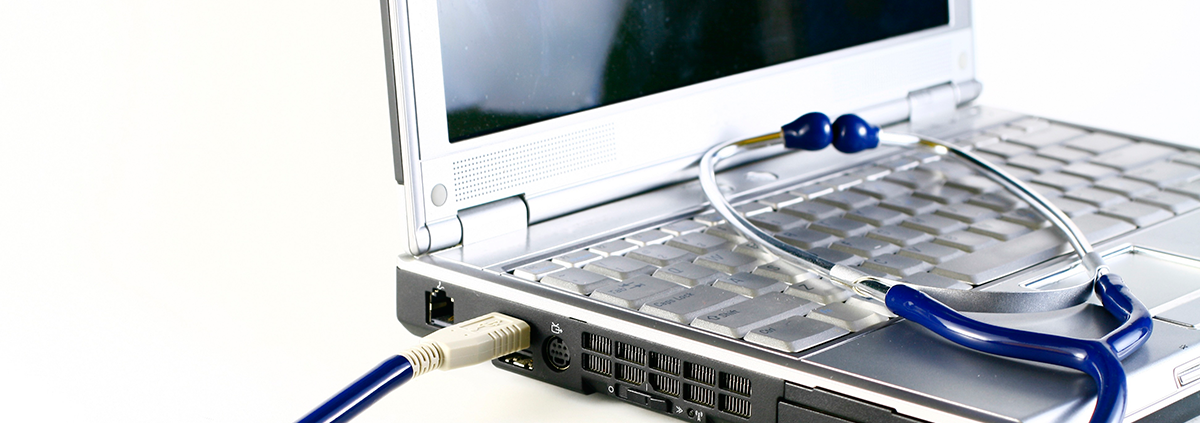
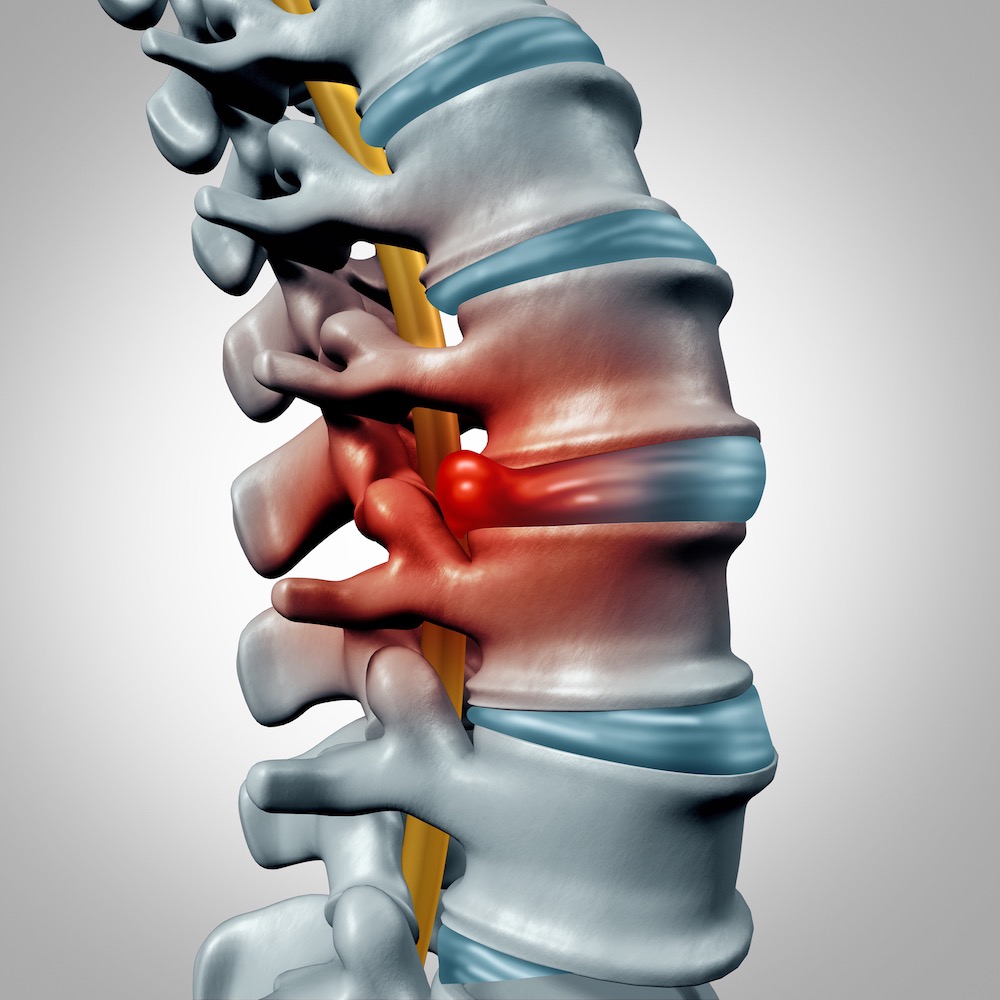


Leave a Comment